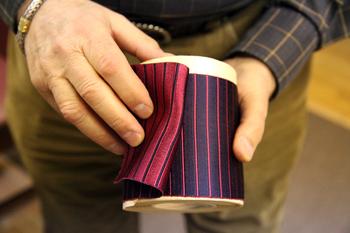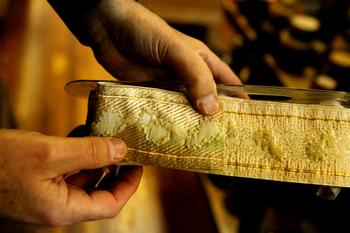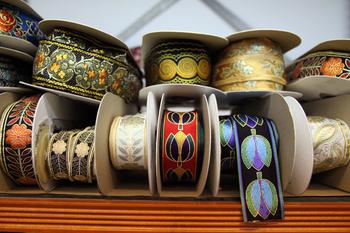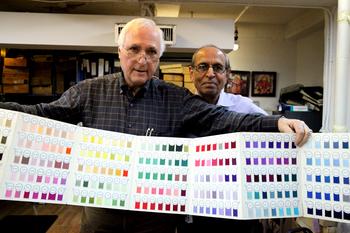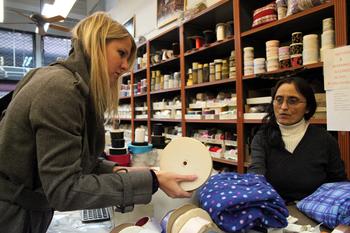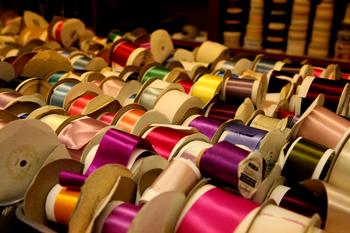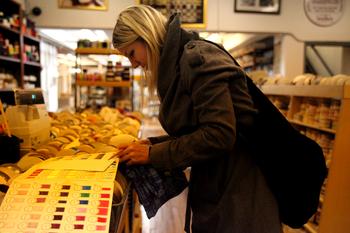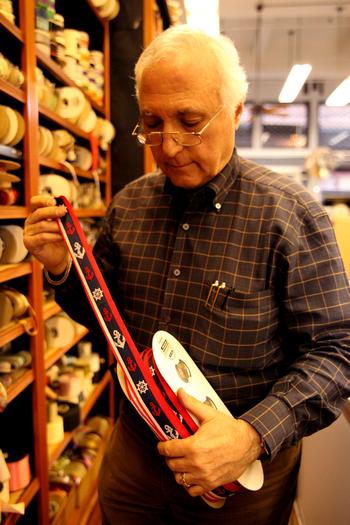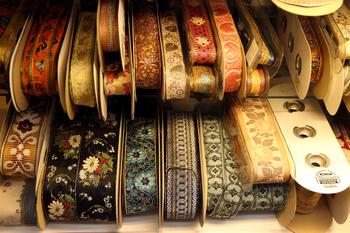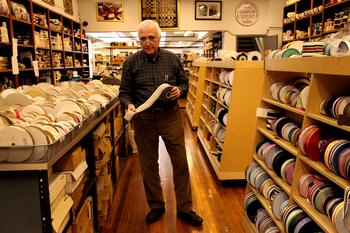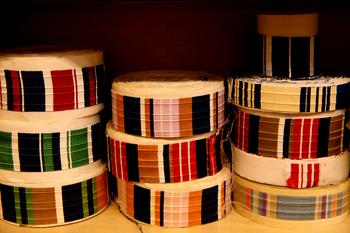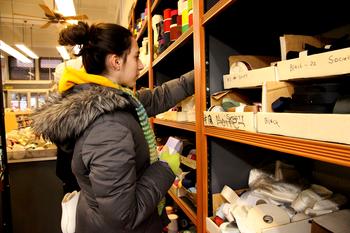New York is a city of specialists from foodies to academics, laborers to shopkeepers. Every Wednesday, Niche Market will take a peek inside a different specialty store and showcase the city's purists who have made an art out of selling one commodity. Slideshow below.
Hyman Hendler and Sons
21 West 38th Street
New York, NY 10018
Hyman Hendler & Sons specializes in vintage ribbons—but it wasn't always so.
At the peak of the business in the 1950s and 1960s, Harold Hendler, son of the original owner, would sit at his kitchen table and sketch floral, striped, plaid and novelty ribbons at all hours. Then he'd pack his bags and fly to Europe, where he'd tour the old mill towns and contract thousands of ribbons for production.
Back at home, he’d enter his shop on 38th Street in the millinery district, where he served designers including Ralph Lauren (a tie maker in those days), Oscar de la Renta, Adolfo, Scaasi—those who dressed "the women who lunch."
"We became known as the ribbon kings," said Michael Weisman, 71, the current owner and son-in-law of Harold. The store, which began as a pushcart driven by Hyman, a Russian immigrant on the Lower East Side in 1900, has grown to encompass one of the world's largest and most unique collections of fine ribbons, in a staggering variety of colors, patterns, textures and widths.
Like a monarch of a forgotten kingdom, Weisman sits surrounded by his riches, slowly selling off his stock of gems. Most of the ribbons in the shop are now a minimum of 30 years old. "The quality of the ribbons today are just the same as they were when we first made them. The ribbons, they do not disintegrate, nobody really knows to look at a ribbon when it was produced," he said.
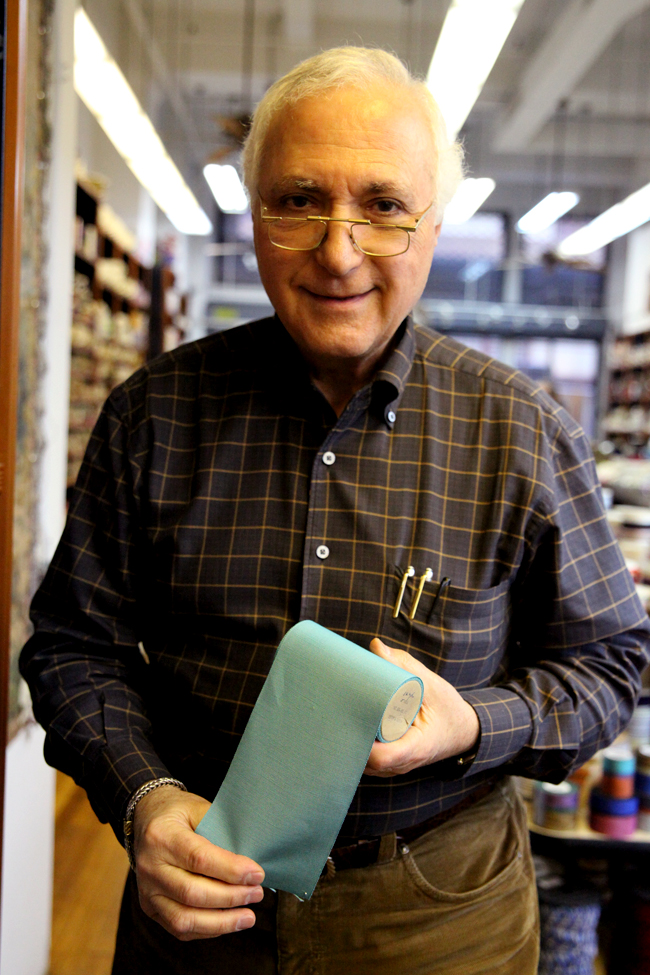
The tale of New York's fading garment industry has been told many times: the textile industry moved overseas, American and European mills closed, and the majority of zipper, button and ribbon shopkeepers of Manhattan's fashion district were casualties. Fashion trends also became more minimal, requiring fewer ribbons.
Still, there is a niche for these ribbons. Hyman Hendler & Sons continues to sell its stock of taffeta, velvet and satin ribbons to interior decorators, Broadway costumers, small-scale shoemakers and New York designers who produce samples in the city before sending the prototypes off to Asia.
To his dismay, many of the ribbons Weisman sells simply aren't made anymore. To cut costs, mills have diminished the number of colors they will combine for a ribbon. "The six color jacquard makes the whole ribbon, if you just look at all those colors combined, that's why the ribbon is beautiful. You start taking colors away that's just a run of the mill piece of ribbon," he said.
The top selling ribbon isn't the rare $90 a yard, exquisitely puffed jacquard ribbons, rather it's the grosgrain (ranging from $2.75-$19.50 a yard), a type of ribbed ribbon with a sawtooth edge that is easily manipulated into trim for draperies, shower curtains, belts and hems.
On a recent weekday, Nicole Callahan, 26, strolled into the store with a bag of fleece pajamas. An employee of a New York sleepwear company, she needed ribbon drawstrings for the PJs, which the company will display during February's fashion week. "I'm just putting some finishing touches on some things. I knew I needed ribbons so I came right here because this is the place for ribbon!" Callahan spent an hour fingering the texture, peering at the color and measuring the width of various ribbons, and ultimately spent $130. But if the pajamas sell, Callahan said, Hyman Hendler’s won’t get the contract. The company will go to production in China.
A project of extremely small scale production drew Ella Lang into the store. This young woman wanted a yard of ornate ribbon to decorate the top part of a tallit for her upcoming bat mitzvah. "I wanted it to be still kind of traditional, but I wanted it to be purple and blue and with no words and to design the little corner pieces myself. I sew a lot," said the twelve-year-old, sorting through shelves of spools with delight.
Weisman, who has worked at the shop for 44 years, would like to sell his treasure trove of ribbons and retire, but said no one in his family is interested in going into the trade. So for now, like the generations before him, Weisman works every day, selling one yard of ribbon at a time.
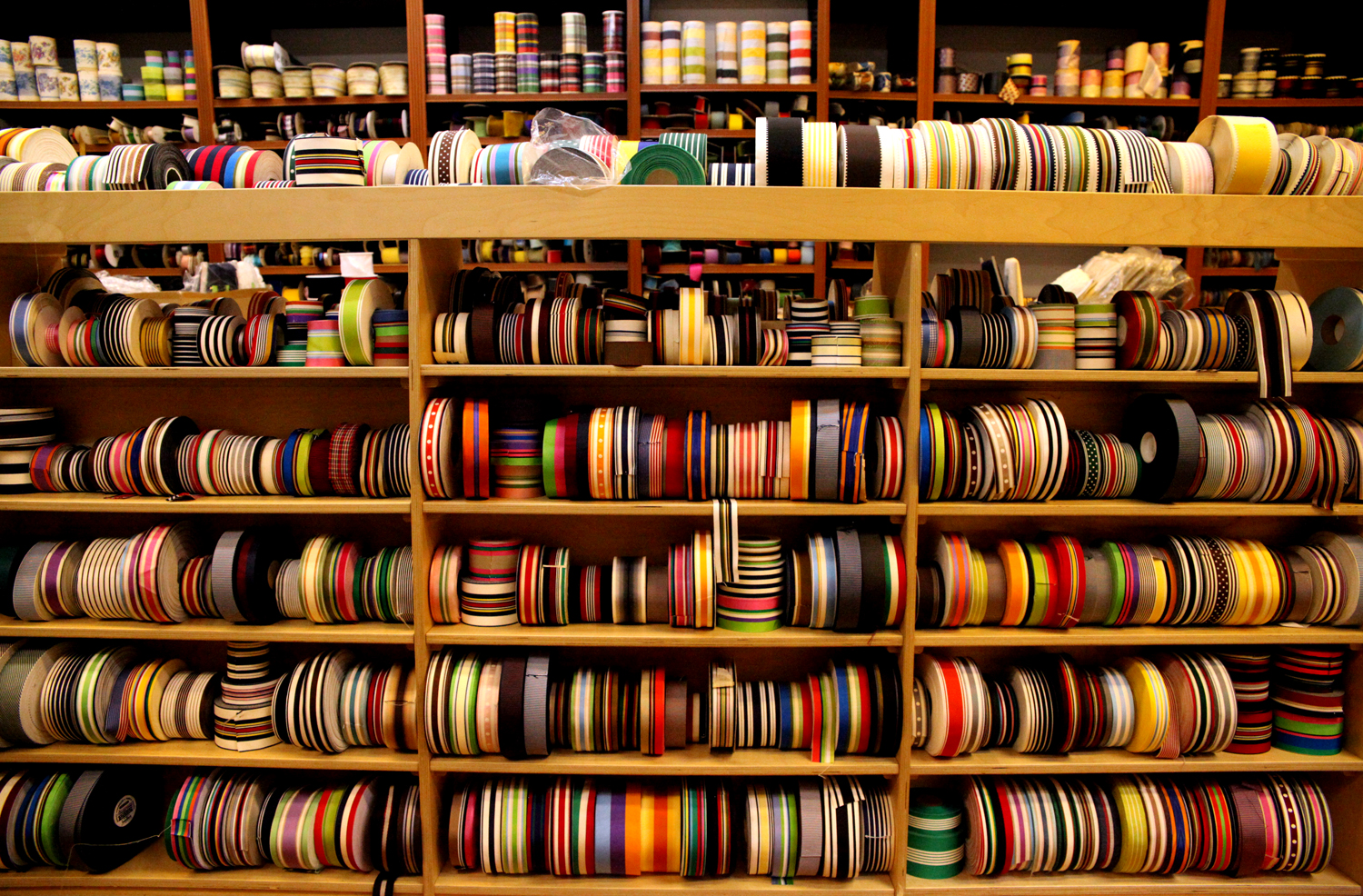
Interview with Michael I. Weisman, owner of Hyman Hendler & Sons.
How did the store get so specialized in the ribbon business?
The business started with my wife's grandfather. It began on a pushcart on the lower east side, like a lot of businesses started. He started originally with millinery, actually I think he was doing millinery in Europe before he came here. Millinery supplies and it led to hats, hat bodies, and ribbons. And we're a ribbon specialist, that's what we've done over the years.
Around the early ‘50s, my father-in-law, Harold Hendler, started to travel in Europe, in certain manufacturing towns in France, Italy, Switzerland, Germany, Spain. He traveled quite a bit, finding mills and we contracted with them to produce for us....He would go through their collection, and pick out specific items that he liked, and go ahead with production. Then this particular mill would take the yarn that we chose and they would take it to a mill, in some cases it was somebody's home, it was a cottage trade, if they had one loom it was a one-loom home. If they had two looms they were getting to be known as maybe a factory. So it took quite a while to produce these items. In one case, one of our manufacturers that we did a nice business with, it took them about three months to produce maybe about 1,000 yards of our satin ribbon that we brought in from France. But they don't exist anymore, they're gone. Today, all you're looking at primarily in satin ribbon is either nylon or polyester. Except Asia produces silk, inexpensive silk satin.
What kinds of ribbons do you sell?
From the basics — grosgrains, satins, velvets —we have probably the largest selection of velvet ribbon in the world today at our warehouse in Woodside. The novelties that we have start with very simple stripes of a hundred percent acetate made in the United States to our complicated stripes, plaids in grosgrain, to taffeta ribbons with picot edges to floral ribbons with scalloped edges, and straight edges to polka dots. A lot of jacquards that we have done over the years, jacquards that are filled, some people call them trapuntos. We really have more specialized ribbons than what anyone else is doing today.
Most of our ribbons are minimum 30 years and older. We made them. We made them over the years. We contracted with the mills in Europe. We had to make large stocks and we always assorted the color range, and you never guess right in colors.
Did your father in law design most of the ribbons in the store?
Yes, he designed the ribbon line. It was his baby. He loved doing it. I remember my mother-in-law used to say to him, because my father-in-law worked on the kitchen table, she used to say to him, "Harold. We have to eat dinner. Please, take all of your—I won't say it—out of here! This was his puppy and he loved it. It gets in your blood. I really love it but it gets frustrating after a while. When you can't get at the people. We used to go through the buildings — of Seventh Avenue, Broadway — and cold canvass. You can't do it today, because security won't let you walk through the buildings. So, how do you find the customers, you try to call them on the telephone. Today, the telephones are all answering machines. And try to get through to the design department of a particular company, it's very difficult.

